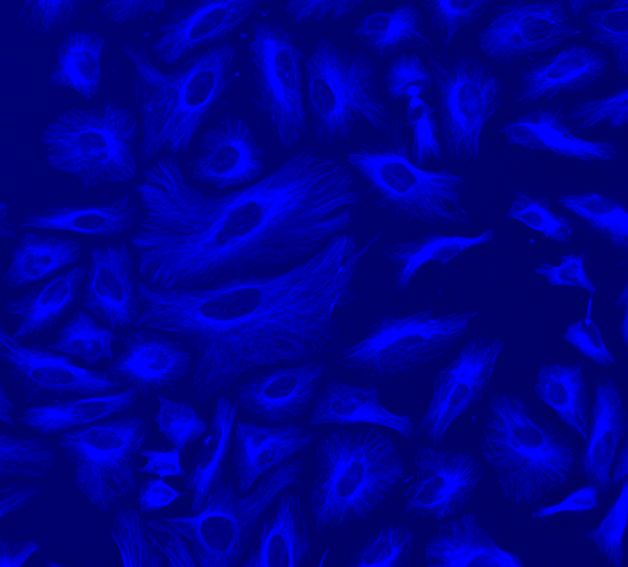ReadiLink™ Rapid iFluor® 350 Antibody Labeling Kit
Production Scale
ReadiLink™ Rapid Antibody Labeling Kits, designed for production scale, provide a convenient and efficient method for labeling large volumes of antibodies with our superior iFluor® dyes, XFD dyes (equivalent to Alexa Fluor®), and various other labels. These kits utilize reactive fluorophores modified with succinimidyl ester (SE) functional groups, which selectively bind to primary amines on proteins, resulting in remarkably bright and photostable conjugates. Every kit contains all the necessary components for three distinct labeling reactions and features a user-friendly, pre-packed spin column for efficient dye removal, maximizing conjugate yield. Each vial of iFluor® 350 SE dye provided in the kit is precisely formulated to label 1 mg of purified protein or antibody. Before labeling, it is important to remove stabilizing proteins like BSA from the sample and refrain from using amine-rich buffers like Tris, which might disrupt the labeling process. iFluor® 350 SE is a bright blue-fluorescent dye with excitation and emission maxima of ~345 nm and ~450 nm, making it an excellent alternative to AMCA and Alexa Fluor® 350 (Alexa Fluor® is the trademark of Invitrogen). iFluor® 350 labeled antibodies are ideal for the direct imaging of high-abundance targets.


| Catalog | Size | Price | Quantity |
|---|---|---|---|
| 5700 | 3 x 1 mg | Price |
Physical properties
| Solvent | DMSO |
Spectral properties
| Correction factor (260 nm) | 0.83 |
| Correction factor (280 nm) | 0.23 |
| Extinction coefficient (cm -1 M -1) | 20000 1 |
| Excitation (nm) | 345 |
| Emission (nm) | 450 |
| Quantum yield | 0.95 1 |
Storage, safety and handling
| H-phrase | H303, H313, H333 |
| Hazard symbol | XN |
| Intended use | Research Use Only (RUO) |
| R-phrase | R20, R21, R22 |
| Storage | Freeze (< -15 °C); Minimize light exposure |
| UNSPSC | 12171501 |
Documents
Contact us
| Telephone | |
| Fax | |
| sales@aatbio.com | |
| International | See distributors |
| Bulk request | Inquire |
| Custom size | Inquire |
| Technical Support | Contact us |
| Request quotation | Request |
| Purchase order | Send to sales@aatbio.com |
| Shipping | Standard overnight for United States, inquire for international |
Page updated on November 20, 2025

